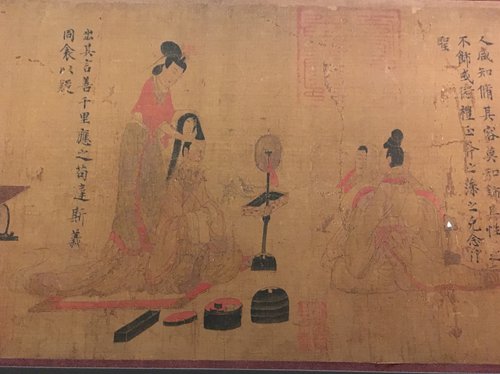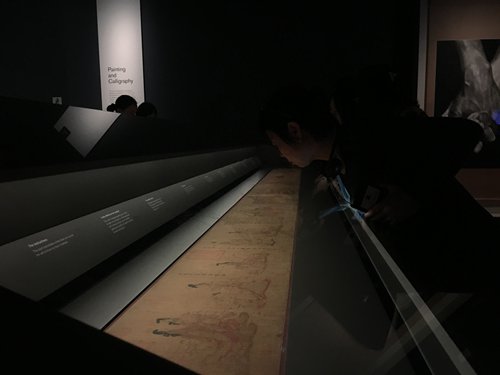
A scene from The Admonitions Scroll (Photo/Courtesy of British Museum)

A visitor examines The Admonitions Scroll at the British Museum. (Photo/Courtesy of British Museum)
The Admonitions of the Instructress to the Court Ladies (The Admonitions Scroll)is being put back on display at the British Museum until August 16, giving visitors a rare opportunity to view one of the earliest extant examples of Chinese painting on silk.
The Admonitions Scroll is traditionally ascribed to Gu Kaizhi (345-406), a court artist who worked in Nanjing during the Eastern Jin Dynasty (317-420) and who was known as the father of Chinese classical figure painting.
Part of the British Museum collection for more than a century, the painting on display is believed to be a fifth to eighth century copy of Gu's original work. It has been executed in a fine linear style that is typical of fourth century figure painting.
The Admonitions Scroll was originally used to educate ladies at court on how to behave according to Confucian principles. It illustrates a poetic text composed by the poet-official Zhang Hua (232-300).
There were originally 12 scenes depicted on the scroll at the British Museum, but three were lost at some point before it entered the museum's collection in 1903, leaving only nine remaining.


















































